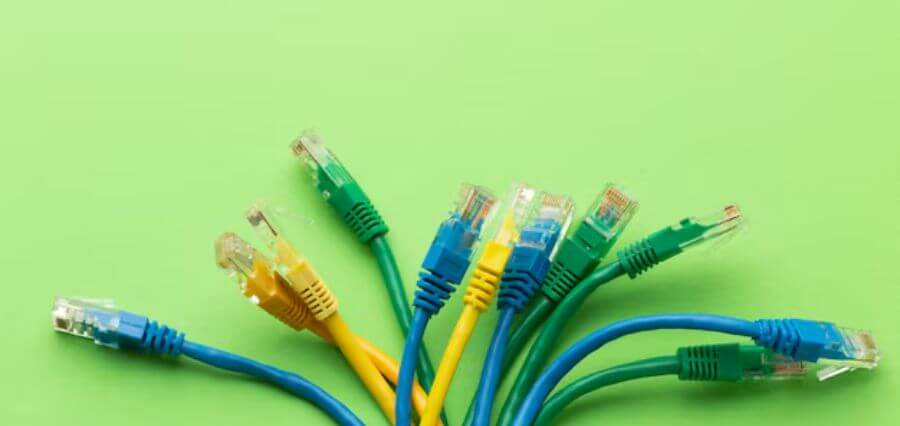Twisted pair cables are the backbone of modern Ethernet networks, providing reliable and efficient data transmission. Understanding the various categories and types of twisted pair cables and their specifications is crucial to determining which one will work best for a specific network requirement.
In this post, you will learn about the 4 types of Load testers and better understand what suits your requirements.
Twisted Pair Cables Explained
A twisted pair comprises pairs of wires twisted together to reduce EMI. Different categories of these cables bring with them their distinct features and the performance they deliver. The twisting reduces crosstalk between pairs, allowing for better data transmission. There are two major types of networking cables: shielded and unshielded. Unshielded Twisted Pair (UTP) cables are widely used as they are cost-effective and easy to install.
Types of Twisted Pair Cabling
The categorization of transmission classes regarding twisted pair cables is dependent on either performance characteristics or intended application settings. Categories, such as Category 5, Category 6, and Category 7, specify the maximum bandwidth, transmission distance, and other performance parameters of the cable. Picking the proper category is essential to guarantee the highest network capabilities with various compatible networking devices. For instance, Category 5 might be used for general-purpose networks, while Category 6, offering increased bandwidth, is better for demanding applications like Gigabit Ethernet.
So, these data transmission classes will give insights into what type of twisted pair cables network administrators should choose based on the requirements.
Category 5e (Cat5e) Cables
Known as one of the best eight cables for balancing performance and cost, CAT5e is an ideal solution, mainly because it performs well at 100 MHz. Gigabit Ethernet—data speeds up to 1,000 Mbps (1 Gbps) over a distance of a maximum of 100 meters. Cat5e cables are perfect for home and small office networks where you need fast connections at a low price point. They are great for tasks like web browsing, video streaming, and online gaming.
Category 6 (Cat6) Cables
If you’re seeking enhanced performance, twisted pair cable Ethernet options like Cat6 cables offer a significant upgrade over Cat5e. These cables support data speeds of up to 10 Gbps over short distances, improving full-duplex capacity while maintaining backward compatibility with CAT5 and CAT6 cabling. For optimal performance, keep cable lengths to a maximum of 55 meters. If you operate a large workplace where data transfer rates are crucial, twisted pair cable Ethernet solutions like Cat6 should be your top choice.
Category 6a (Cat6a) Cables
Cat6a cables offer a performance beyond the previous generations of Cat6, capable of providing speeds of 10 Gbps over longer distances of up to 100 meters. These cables are particularly good at minimizing interference; they generally offer superior shielding, which hears consistent data transferring. Each one is designed for high-density environments with use cases including video conferencing, virtual reality, advanced data analytics, and more. Although Cat6a cables cost more, they are helpful in ensuring that a network is future-proof.
Category 7 (Cat7) Cables
Cat7 (Top performance): if you require the best performance, cat7 provides the best data transfer capabilities. These cables can also be used at up to 10 Gbps over a distance of 100 meters and are designed not only with physical ruggedness but also robust shielding to reduce interference. While more costly, Cat7 wires are ideal for rugged areas such as server rooms and data centers. This makes them the perfect solution for businesses that need a robust and fast connection.
Things You Should Consider in The Selection of a Cable
There are a number of aspects that matter when choosing twisted pair rows. Knowing these factors can aid you in making an educated decision according to your specific networking requirements.
Performance Requirements
Analyze the network’s performance requirements by measuring data rate and bandwidth requirements. Think about present usage and future needs. It is important to select a cord that works for your present and future activities to avoid any complications later on.
Budget Constraints
Prices are just another reason to consider this projector. You already know that the performance will be better if it’s in a higher category, but of course, all categories have a price. This will allow a proper selection that is inexpensive but does not overspend and still performs ideally.
Conclusion
The selection of the most appropriate twisted pair cable Ethernet according to your requirements also calls for understanding and appreciating the different performance attributes housed in these categories. When performance requirements, budget constraints, and environmental factors are taken into consideration, the cable that provides the best network performance can be chosen. Thus, it is really essential to invest in the right cable because it helps transmit data reliably and efficiently, thereby ensuring that our digital landscape remains connected.

